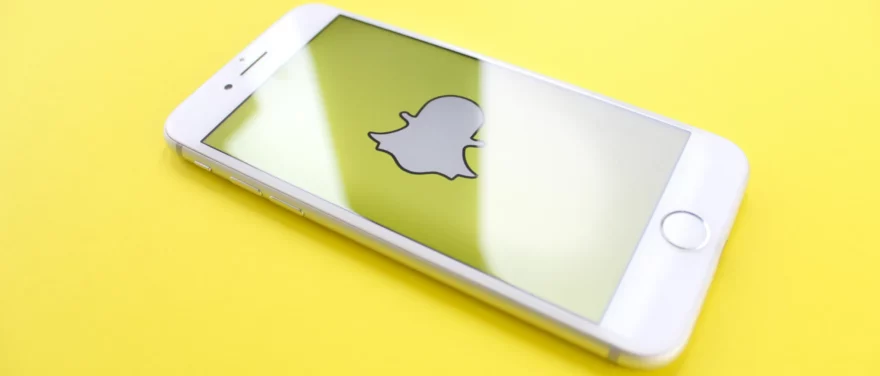
Imagine that you as a parent take your child to a big open room filled with questionable strangers, and then you leave them there for hours on end to fend for themselves. Would you do that? No way…right? How about leaving them on Snapchat on their own?
That’s what the internet is like to a child. A big open room filled with virtual strangers. Sure, they feel like their friends are out there too, but in actuality, there are millions of strangers that have access to them on the internet if you are not vigilantly protecting them. You might be familiar with some of the bigger social media sites like Facebook or Twitter, but what about Instagram, Vine or Snapchat? Are you aware of safety on Snapchat? Do you even know what Snapchat is? Snapchat security is an important lesson to teach your child if they are using this popular app.
Can Snapchat be safe and secure?

Snapchat guidelines state that no one under 13-years-old is permitted to use the site. Many kids use the site without their parent’s permission, and Snapchat does make an effort to monitor and get rid of accounts that are knowingly created by minors under thirteen. Teens between the ages of 13-17 can use the site as long as they have their parent’s permission. So keep in mind that all this advice is geared towards the safety of kids aged 13-17. Younger kids are able to use a different Snapchat app called “Snapkidz” that doesn’t have the same Snapchat features as the original Snapchat. You can create, and edit photos, and messages, but Snapkidz doesn’t allow the child to send them to anyone.
Wait a minute, what is Snapchat again?
Snapchat is essentially a picture sharing application. It was developed by three Stanford University students (Evan Spiegel, Bobby Murphy, and Reggie Brown) in 2011. The quirk about Snapchat that makes it unique is that once you send a picture, video or message it only stays online for a few seconds. Ten seconds at most, and the time it lasts depends on the sender. To send someone a message, you need to know their username and have them added to your “my friends” list.
Tips for Snapchat Safety
Anyone who knows your username can send you a message, but one of the safety features is that you can have your settings only accept messages from people on your friend’s list. This is your first thing to check as a parent. Look over your teen’s friend list, and make sure you know who’s on it. Discuss with your child and delete anyone on it that they don’t know in person. You also have the ability to block users as well. So if someone they know is harassing them, you can block that person. Snapchat photos are only meant to last for a few seconds, but keep in mind that anyone who sees these photos can take a screenshot and save them forever.
The next lesson to teach your teen is that whatever they send out can end up on the internet forever. FOREVER. This is exactly the opposite of the original intent of Snapchat. Snapshots are supposed to be gone after 10 seconds, but that’s not really the case. Someone can easily see the photo and take a quick screenshot of it, allowing them to repost it wherever and whenever they want. So teens need to learn what they want to share, and how to protect their privacy.
Your 16-year-old might want to send a picture to her “boyfriend”, not realizing that he might end up sharing the image with his entire football team. Snapchat has become known as a “sexting app” in many teen circles. Even though they think it’s harmless fun to send out explicit photos, it’s not.
Snapchat security is a concern because they have been hacked in the past. It’s always a concern that a private image might end up on public display. It’s also illegal. Federal law makes it illegal to produce or share sexual images of any minor, even if the image is self-taken. Your teen might not know this and it’s important to educate them. If someone is bothering or forcing them to take this kind of photo then that’s a form of bullying.
If your teen receives a request from someone they don’t know that makes them uncomfortable it’s important to block that user. Then, report the offence to Snapchat Security Support or email them at [email protected]. Here is a list of what Snapchat according to their guidelines doesn’t want you to “snap.”
What not to Snap:
- Pornography
- Nudity or sexually suggestive content involving minors (people under the age of 18)
- Minors engaged in activities that are physically dangerous and harmful
- Invasions of privacy
- Threats
- Harassment or Bullying
- Impersonation
- Self-Harm
Dealing With Cyberstalking
So you’ve checked your teen’s friend list, and you regularly monitor the pictures they send and receive. What do you do if one of their “friends” starts to bully, harass or cyber stalk them? This is a tricky subject, especially among young girls who tend to turn against each other at the drop of a hat. One minute your daughter has a group of great friends and the next minute mean jabs are being “snapped” her way by girls who used to be her friends. It’s heartbreaking when you see your child being mistreated in any way. It’s especially heartbreaking to have to help your child navigate through the ups and downs of female friendship.
Always try to keep the line of communication open with your child. Sometimes you might have to ask them repeatedly to share their feelings with you, but if you keep showing your concern then eventually they will open up to you. The best you can do is to make sure that your child isn’t being one of the bullies online. When they share a moment online here are a few things to keep in mind from the Snapchat guidelines:
“Be nice—it really helps. Just as in physical settings, people generally react, interact and share things in a friendly way on Snapchat too. Among friends sharing —especially with photos on mobile devices—it’s usually a lighthearted thing, sometimes even goofy.
It’s just a shared moment like always, only now it can also be shared from the other side of the planet. It’s not about documenting anything—it’s a visual chat at the moment. That’s why the app’s called “Snapchat.” So if used the way intended, it’s just a quick freeze-frame of a moment. The ephemeral nature of it is really a security feature.”
“One-to-one sharing. Snapchat was designed for sharing between a couple of friends, but you can share with more than one person by selecting each recipient manually. Unlike social network sites and other media-sharing apps, you can’t post publicly. You can only share with friends and you get to decide who to share with each time you send a “snap.” There’s some safety to this—no automated mass-sharing that could embarrass intentionally or by mistake.”
“Context is key. A positive experience on Snapchat truly depends on the situation being snapped and the relationship you have with the friends you’re sharing with. So, as in all other relatings in life, help your kids understand that there’s safety in kindness.”
You do have an option. If you decide that you don’t want your child using Snapchat, you can just delete their account. All you have to do is go to the support page on the Snapchat website and use the “delete my account” option. If you are more comfortable with other social media sites let your teen use them. Keep in mind there are plenty of other ways for your teen to stay in contact with their friends. Pick up the telephone, invite them to a movie, and go out to do something with them instead of staring at a screen all day. Unfortunately, social media is a new aspect of childhood that we didn’t have to deal with growing up. We didn’t have a way to carry all our friends with us all the time by using a device that can fit in a pocket.
Overall, apps like Snapchat are meant to be a fun way to connect with friends and loved ones. Keeping it fun and safe for your child is a challenge, but since social media isn’t going away anytime soon, it’s best to be aware of all the issues that come with this newfound lifestyle.
